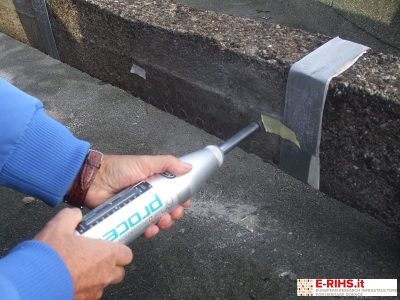
LABORATORY: CNR ISPC
NAME OF THE INSTRUMENT
Schmidt Hammer
GENERAL DESCRIPTION
The rebound hammer test, also known as the Schmidt Hammer Test or sclerometric test, developed by Swiss engineer Ernst Schmidt in 1948, is one of the oldest, simplest and non-destructive tests for concrete and rock applications. The device uses a spring with known energy and measures the hardness of the concrete surface using the rebound principle. The Schmidt Hammer Test is standardized according to ASTM C805 and BS EN 12504-2.
Tests may be performed horizontally, vertically both upwards and downwards and in any angular position intermediate to the surface. The devices are supplied with correlation curves by the manufacturer. At least 8-10 measurements are required to have a reliable mean data respecting the distance between one test area and the other established by the above standards. The tip has a diameter of about 1 cm and on the analyzed surface, depending on the material of which it is made, it creates a small circular depression and more or less visible. The surface should be planar and smooth if possible, this is why the instrument is equipped with a stone to smooth the test surface.
TECHNICAL DESCRIPTION
The equipment consists of two sclerometers Proceq company with the following characteristics:
- N type with an impact energy of 2.207 Nm, for concrete structures with a thickness of more than 10 cm;
- L type with an impact energy of 0.735 Nm, for concrete structures with a thickness of more than 5 cm and less than 10 cm.
The Schmidt Hammer Test is mainly used to test concrete, in fact, the manufacturers of this instrument provide only the calibration curves that correlate the rebound number and the compressive strength for concrete only. Many recent research works have shown that this method can be used to estimate the compressive strength of building stones, bricks and other materials making appropriate correlation lines between the bounce number and the compression strength of the corresponding material
Referent:
Silvia Vettori silvia.vettori@cnr.it
